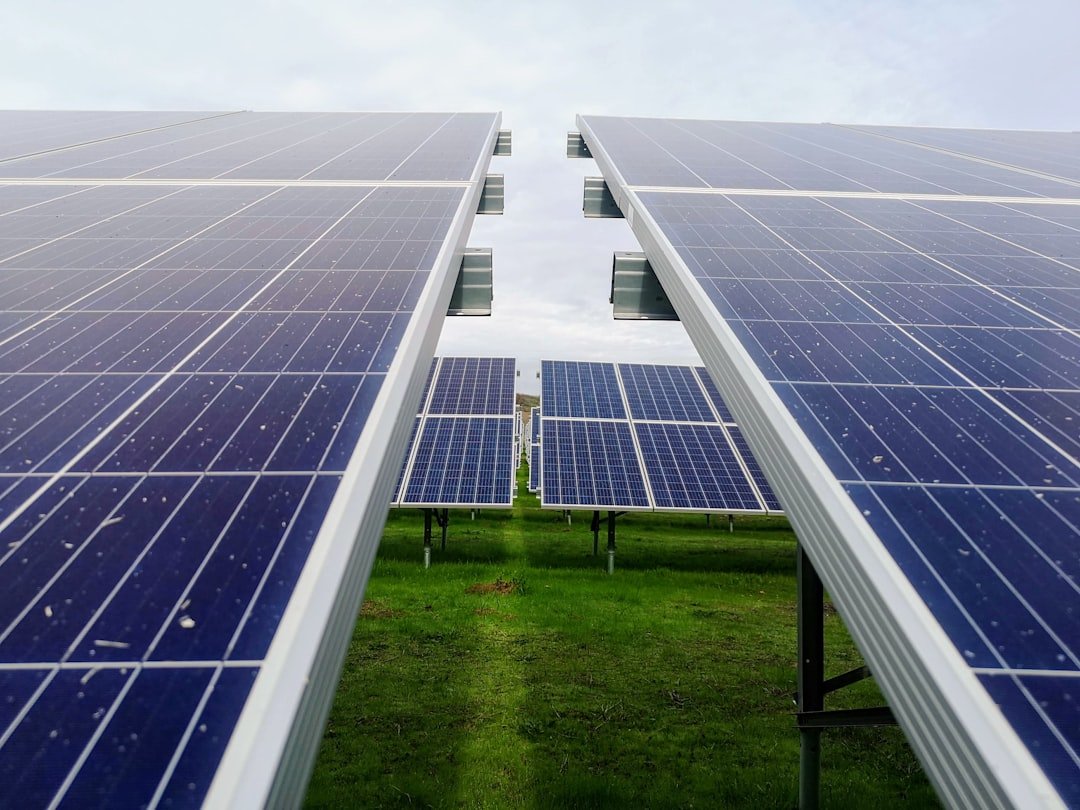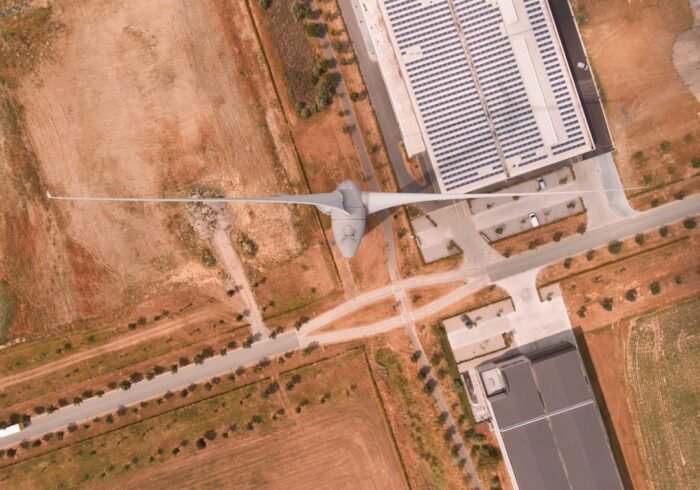Knowing How Much Solar Panel Installation Will Cost The size of the system, the kind of panels selected, and the difficulty of the installation process are some of the variables that can affect the cost of solar panel installation. The initial outlay needed to switch to solar energy is something that many homeowners struggle with. Prior to any rebates or incentives, the average cost of a residential solar panel system can be between $15,000 and $30,000. This cost usually covers the cost of the solar panels themselves, inverters, mounting hardware, & installation labor. It is important to remember, though, that these numbers may vary depending on the local labor market, the household’s unique energy requirements, and geographic location.
Key Takeaways
- The cost of solar panel installation varies based on factors such as system size, location, and equipment quality.
- Cash payment options for solar panel financing include paying upfront or using a home equity line of credit.
- Solar panel leasing and power purchase agreements offer the option to rent or purchase the power generated by the solar panels.
- Government incentives and tax credits can significantly reduce the cost of solar panel financing.
- Home equity loans and lines of credit can be used to finance solar panel installation by leveraging the equity in your home.
Buyers should think about continuing maintenance and operating costs in addition to the initial outlay. Solar panels typically need little upkeep, but to guarantee peak performance, periodic cleaning and inspections are required. In addition, homeowners who want to store extra energy for use in the absence of sunlight should consider the possible expenses of battery storage systems. Homeowners can better plan for the financial ramifications of switching to solar power and make educated decisions about their solar investments by being aware of these different factors.
Payment Options for Solar Panel Financing in Cash For individuals with the resources, paying with cash for the installation of solar panels can be a compelling choice. Homeowners can avoid paying interest and other financing costs related to loans or leases by using this method. By making the payment up front, they can maximize their return on investment right away by utilizing all available tax credits and incentives. Also, homeowners who purchase the system outright will continue to receive free electricity for many years after the initial outlay is recovered.
Though it might seem simple, paying with cash necessitates careful budgeting. It is necessary for homeowners to evaluate their existing financial status and decide whether investing a sizeable amount in solar installation is feasible without endangering their other financial commitments. The opportunity cost of paying cash for solar panels rather than investing that money elsewhere must also be taken into account. Finally, even though making a cash payment can result in significant long-term savings, it requires a careful assessment of one’s financial situation.
| Financing Option | Interest Rate | Loan Term | Minimum Credit Score |
|---|---|---|---|
| Solar Loan | 3.5% – 6% | 5 – 20 years | 650 |
| Home Equity Loan | 3.5% – 8% | 5 – 30 years | 620 |
| Solar Lease | N/A | 10 – 25 years | 650 |
| Power Purchase Agreement (PPA) | N/A | 10 – 25 years | 650 |
| Property Assessed Clean Energy (PACE) Financing | 4% – 8% | 5 – 25 years | 620 |
Solar Panel Leasing & Power Purchase Agreements (PPAs) For homeowners who might not have the initial funds to buy a solar system outright, PPAs offer an alternative financing option. To use the solar panels installed on their property without actually owning them, homeowners enter into a leasing agreement and pay a set monthly fee. Some worries regarding system maintenance may be allayed by this option, which frequently includes maintenance and monitoring services offered by the leasing company. Conversely, instead of paying a set monthly lease fee, homeowners can use a power purchase agreement to pay for the electricity produced by the solar panels.
This arrangement can be attractive to people who wish to take advantage of solar energy without making a significant upfront investment because it usually entails a lower initial cost. Homeowners must, however, carefully review the fine print because these agreements occasionally contain escalator clauses that raise costs over time. Making an informed choice requires knowing the terms and conditions of PPAs and leasing. Financing Solar Panels with Government Incentives & Tax Credits Homeowners can install solar panels at a lower cost thanks in large part to government incentives and tax credits.
Homeowners can deduct a portion of the costs of installing solar panels from their federal taxes in many areas thanks to federal tax credits. For those who qualify, this credit, which is worth 30% of the entire installation cost as of 2023, offers significant savings. The total cost of switching to solar can also be decreased by taking advantage of the incentives that many states provide, such as rebates or performance-based incentives. Also, additional benefits like sales tax waivers or property tax exemptions on solar equipment purchases may be offered by local governments.
These incentives have the potential to greatly increase the solar investments’ financial viability and persuade more homeowners to think about renewable energy sources. Potential purchasers should speak with tax experts and investigate local incentives to make sure they get the most out of their solar technology investment. Home equity loans and credit lines for solar panel financing Homeowners wishing to finance their solar panel installations often turn to home equity loans and credit lines (HELOCs). In comparison to other financing options, homeowners can obtain loans with comparatively low interest rates by utilizing the equity they have accrued in their homes.
With this strategy, they can obtain the money required for installation and possibly receive tax-deductible interest payments. The use of home equity as a financing tool is not without risk, though. Homeowners need to exercise caution when it comes to taking on excessive debt or risking depleting their home’s equity. Before choosing this option, homeowners must evaluate their financial stability because changes in property values can also affect equity levels.
The funding required for solar installations can ultimately be obtained through home equity loans and credit lines, but they need to be carefully considered and planned for. Financing Options and Solar Loan Programs Solar loan programs have become a good way for homeowners who want to install solar panels without having to pay for them up front. Specifically created for renewable energy projects, these loans frequently have advantageous conditions like long repayment terms and low interest rates. Homeowners can now more easily obtain funding thanks to the numerous financial institutions that offer customized solar loans that accommodate different credit profiles. Some states and municipalities have set up their own solar loan programs in addition to conventional banks and credit unions with the goal of encouraging the use of renewable energy.
Some special advantages that these programs might provide include lower interest rates or adjustable repayment plans based on specific needs. Homeowners should investigate all local loan programs and compare terms to determine which one best suits their needs. Shared Solar Financing and Community Solar Programs Community solar programs offer a creative way to install solar panels on rooftops that might not be suitable or for people who would rather not invest in separate systems. Through these programs, several people can contribute to the purchase of a communal solar array off-site.
Depending on their proportion of the energy generated by the community solar project, participants receive credits on their utility bills. Access to renewable energy without needing physical space for panels is one benefit of shared solar financing, along with lower upfront costs. Also, low-income households and renters who might not otherwise be eligible for traditional solar financing options are frequently served by community solar programs. By combining their resources, participants can benefit from solar energy and help create a more sustainable future.
Assessing Your Needs and Finding the Best Solar Panel Financing Option Selecting the best financing option for solar panel installation necessitates carefully weighing each person’s unique situation and preferences. Homeowners should start by evaluating their financial status, taking into account their long-term financial objectives, credit scores, and available cash reserves. It will be easier to identify appropriate financing options if they are aware of how much they can or are willing to invest up front. Homeowners must also take into account their energy requirements and the speed at which they hope to recover their investment through utility bill savings.
While some people would rather have long-term ownership through loans or cash purchases, others might prioritize short-term savings through leasing or PPAs. Speaking with experts in solar energy can give you important information about the options that are available for your needs and preferences. Finally, careful thought and study will enable homeowners to make well-informed choices that support environmental sustainability and their financial objectives.



